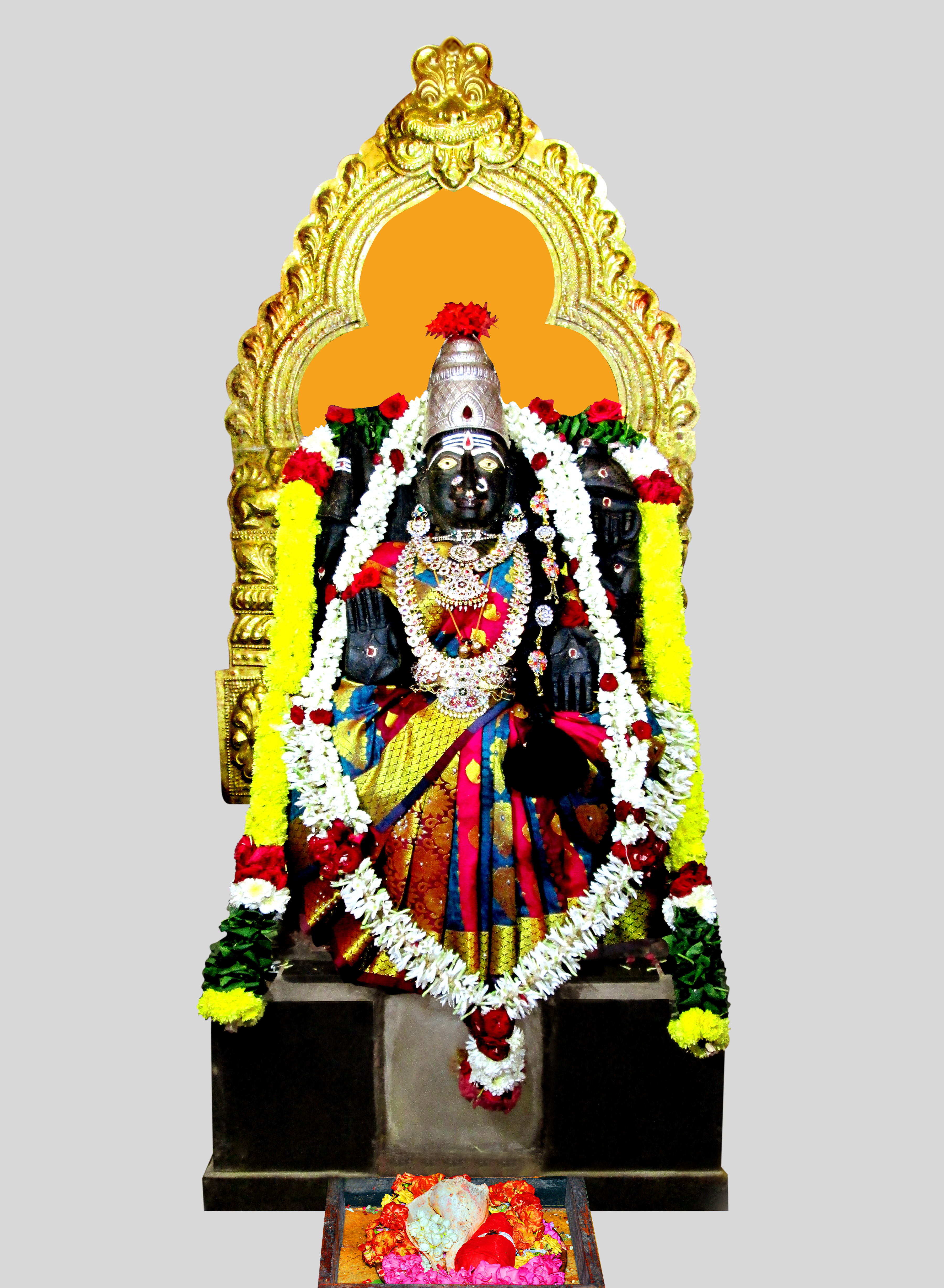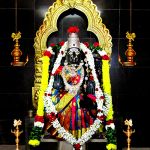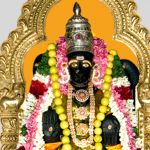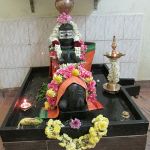Annai Mandhira Paavai
The shrine to Divine Mother Mandhira Paavai, considered the guardian deity of the Siddhas, is one of the unique features of the temple. Annai Mandhira Paavai is believed to have evolved out of the mantra sakthi of the Siddhas. It’s worth repeating that a temple to Annai Mandhira Paavai is not known to exist anywhere else in Tamil Nadu or India.
In front of the Sanctum Sanctorum of Annai Mandhira Paaavai, the statues of 18 Tamil Siddhas (namely Agasthiyar, Karuvoorar, Theraiyar, Kaalanginaadhar, Sattaimuni, Pulasthiyar, Sivavaakkiyar, Azhukannar, Kamalamuni, Bhogar, Machamuninaadhar, Idaikkaadar, Thirumoolar, Konganavar, Ramadevar, Paambaati Siddhar, Pulippani and Punnaakkeesar) line up either side of Annai, within a small enclosure.
The sankalpa of this arrangement is that the 18 Tamil Siddhas worshipped at the temple are seated before Annai Mandhira Paavai in a deep, yogic state of absorption and worship, ever ready to do Her bidding and cast their beneficial glance on those who worship them and Annai Mandhira Paavai with sincerity.
Mandhira Paavai Mahamandapam
The Mahamandapam of Mandhira Paavai is one of the larger ones in temple and is actually larger than that of Annai Aadhi Parsakthi. The ceiling of the Mandapam features exquisite, hand-painted drawings of various Hindu religious symbols and yantras and other religious motifs.
On the western side of the Mandapam, just near the Akhanda Deepam, is the open Sannidhi of Mahalakshmi, situated on a raised platform, about halfway from the ceiling. All along the Mandapam, just below the ceiling, are beautiful, painted sculptures depicting the manifestations of Lord Muruga in His six abodes (Aarupadai Veedu) in Tamil Nadu and some stories associated with some of these abodes. Additionally, the mandapam also contains painted sculptures of saints and sages of India such as Sri Ramakrishna Paramahamsa, Swami Vivekananda, Sri Ramana Maharishi and Vallalar Swamigal.
There’s also a panel that depicts Sri Dakshinamurthi, seated beneath a banyan tree, imparting Divine Wisdom to his four disciples through mere silence. Annai’s Mahamandapam thus provides a great spiritual setting for devotees to spend time in worship and meditation on the Divine.
How to Worship
To seek Her blessings, it’s suggested that devotees light one ghee lamp for Divine Mother Mandhirappaavai and eighteen ghee lamps for the Siddhas, from the Akhanda Deepam at the temple. This should be followed by chanting Mandhira Paaavai Potri thrice while sitting in front of the Divine Mother and the Siddhas. By doing so, they shall feel relieved from their burdens and get betterment by the blessings of the Siddhas.
Other modes of Worship
Devotees may also worship Annai through any of the following methods and receive Her blessings:
- Abhishegam
- Velli Kavasam (Silver Kavasam)
- Sandana Kaappu (Sandal Kaappu)







